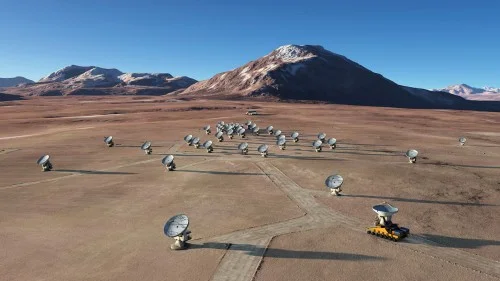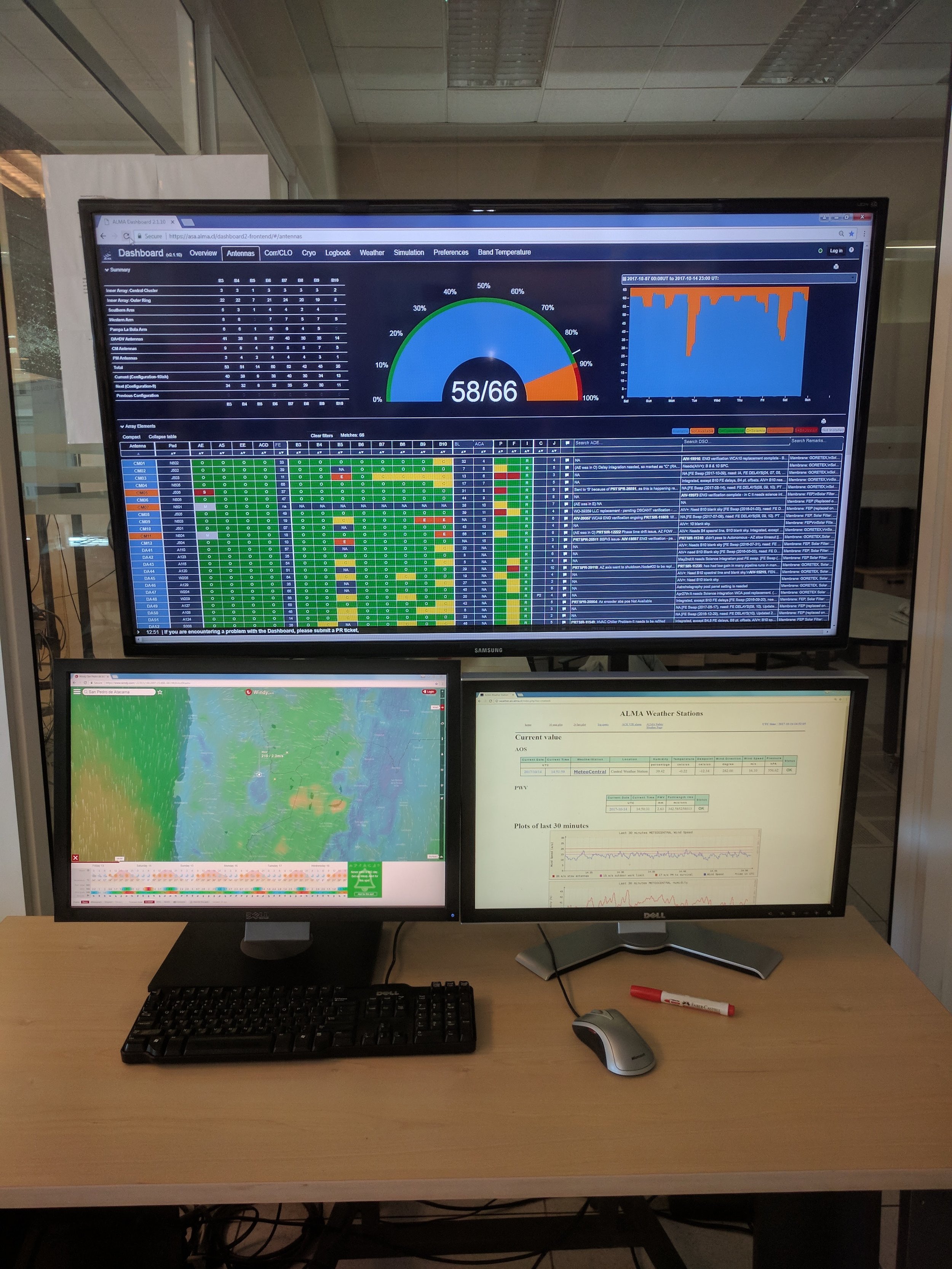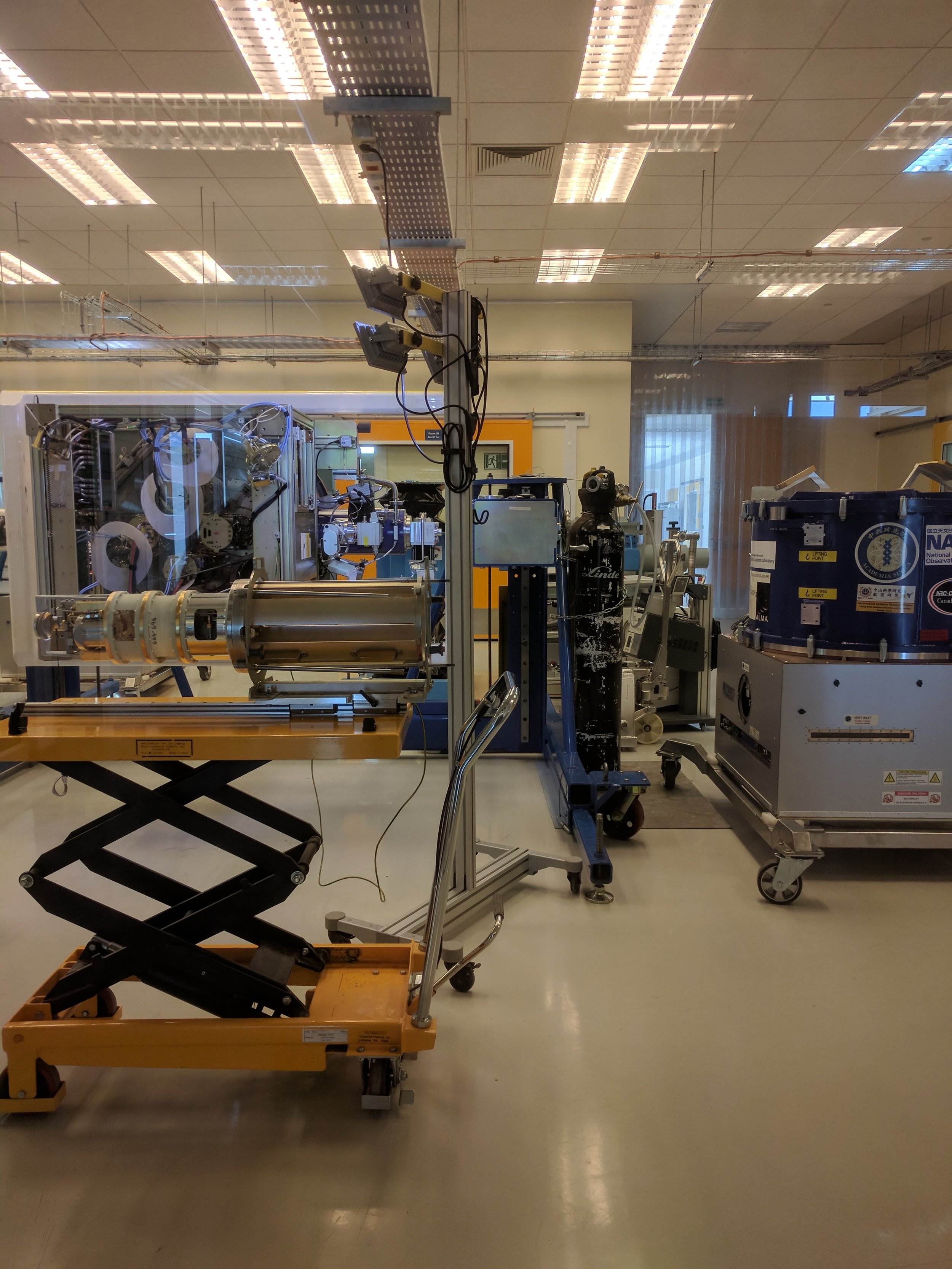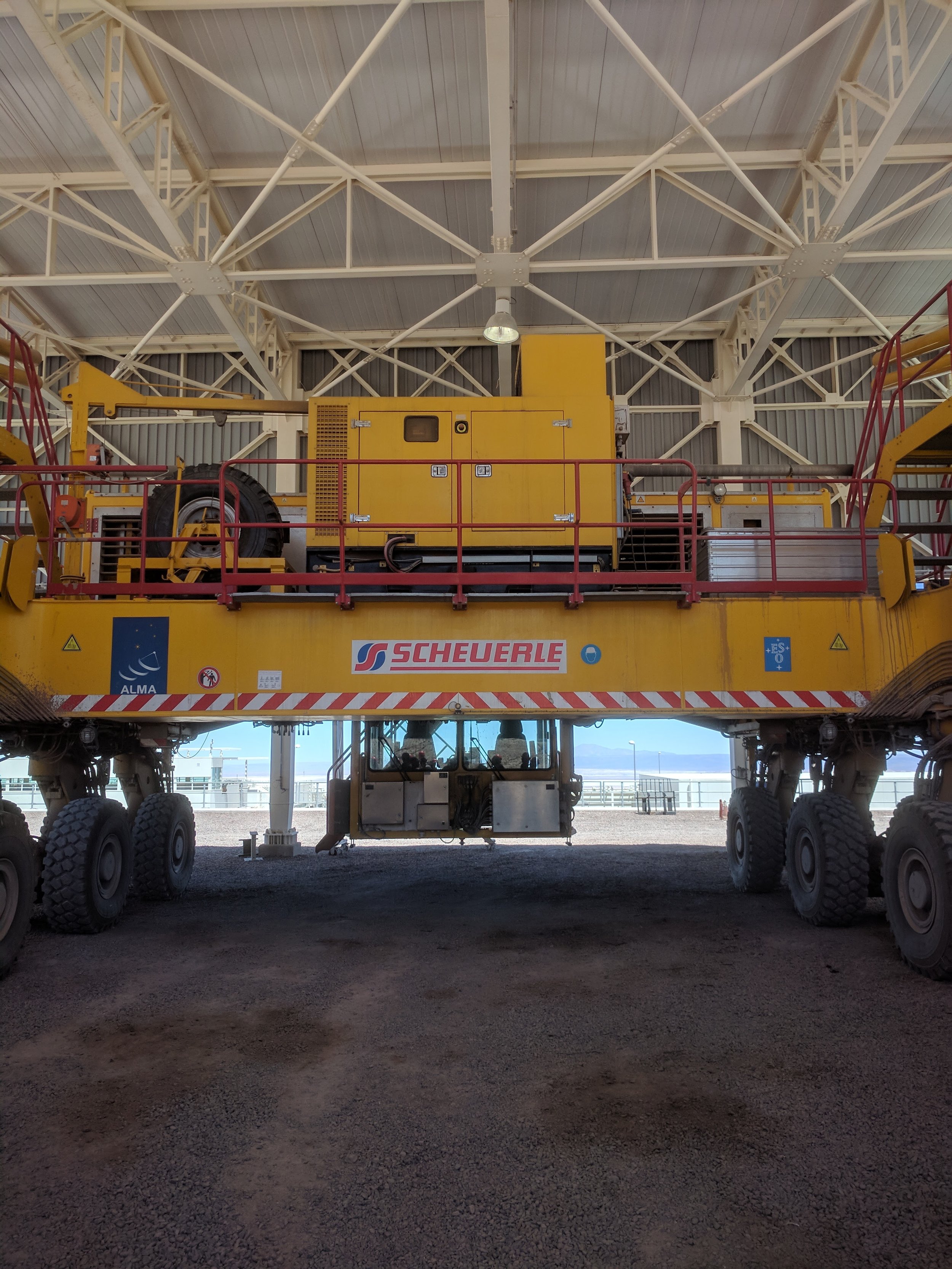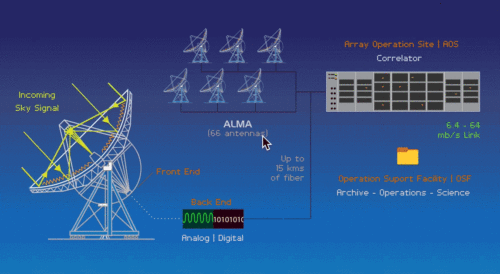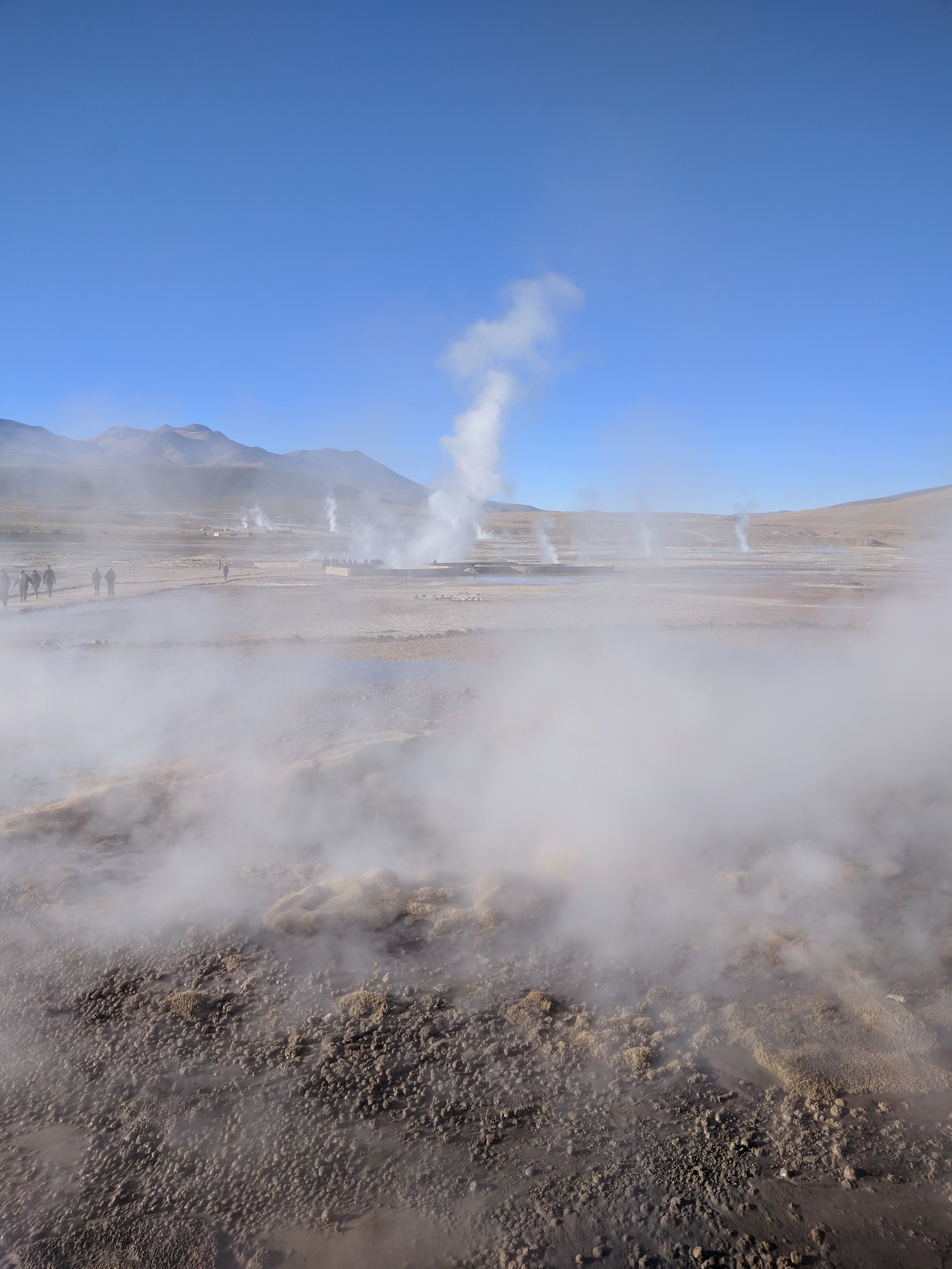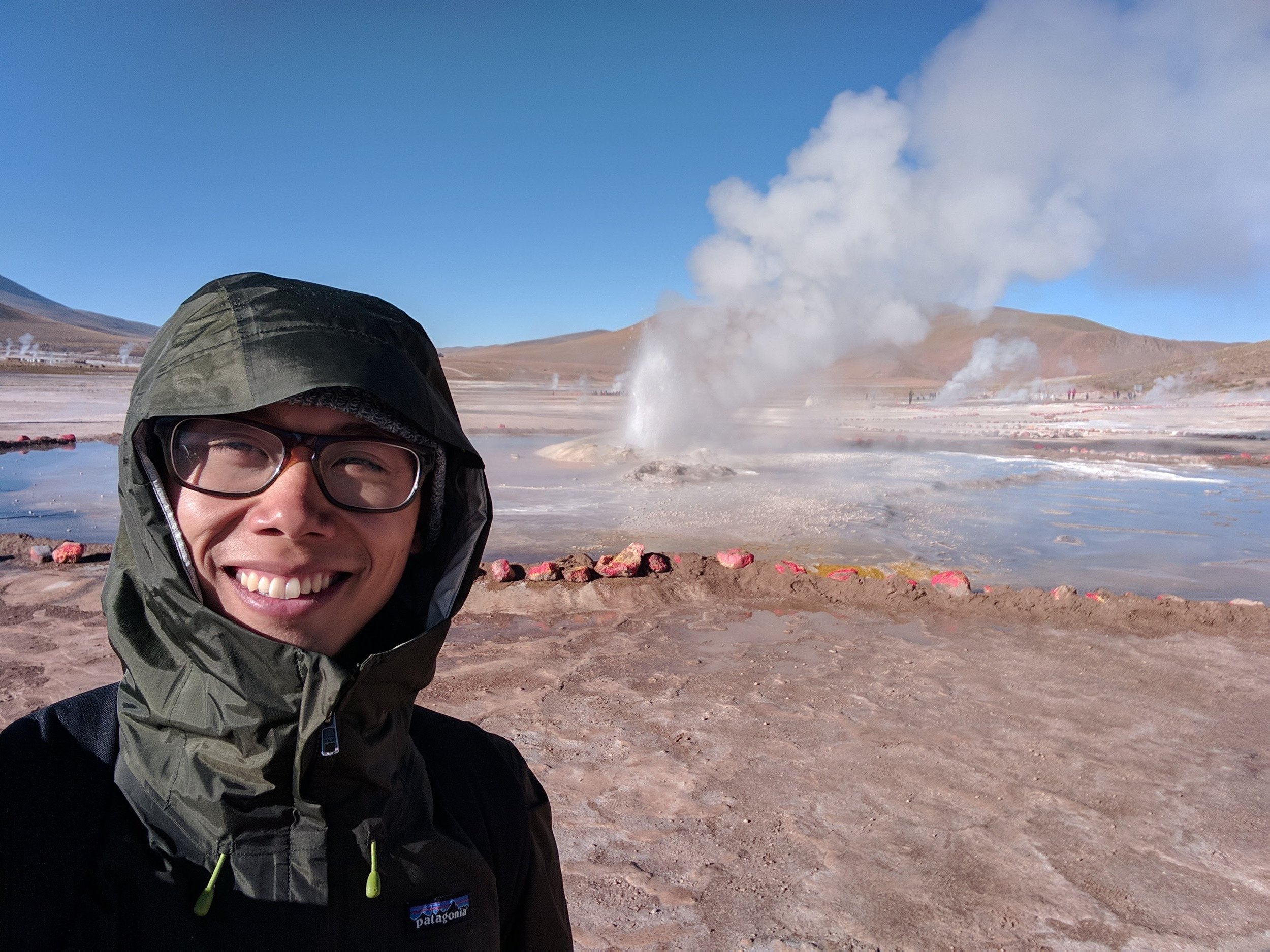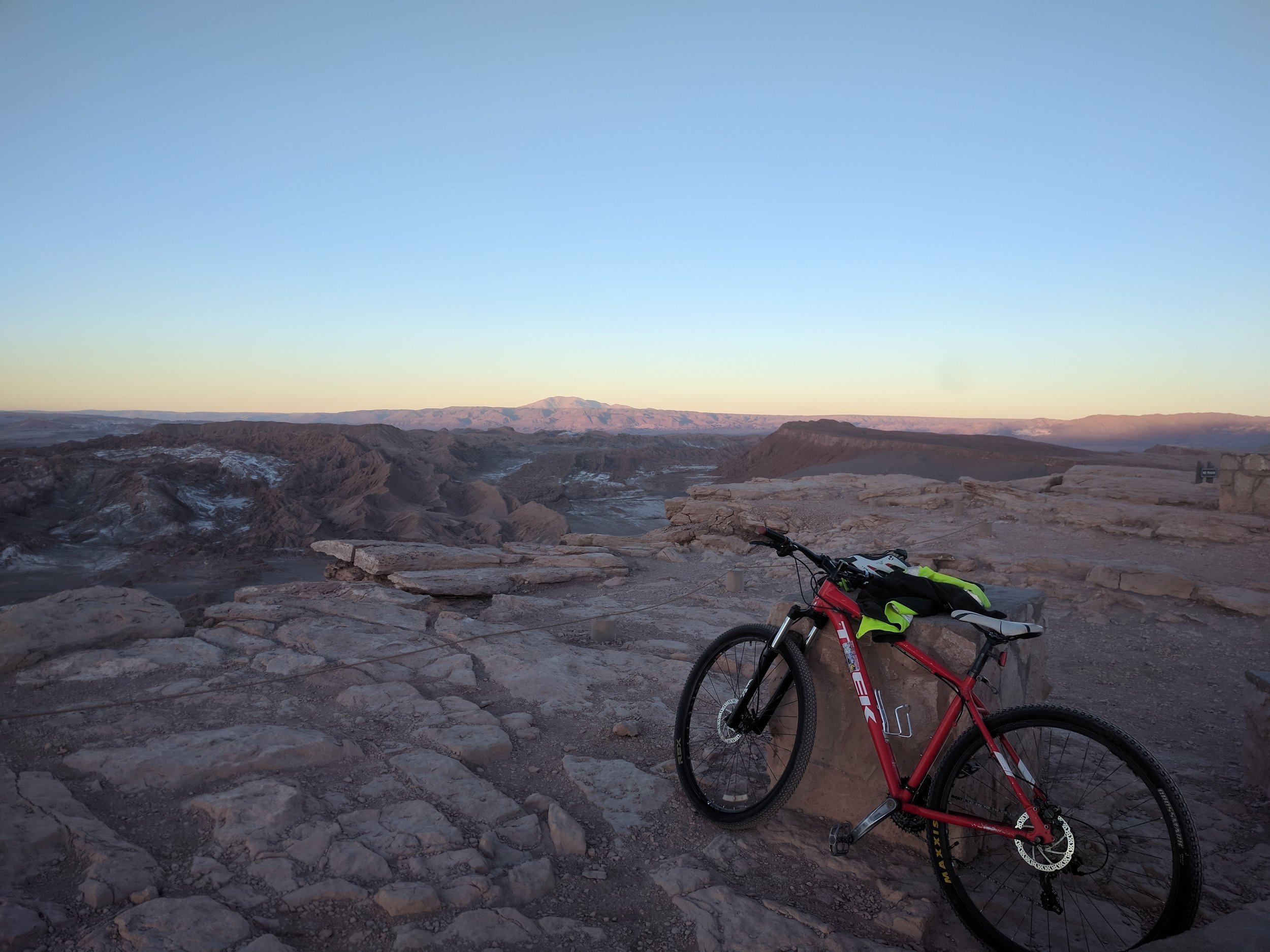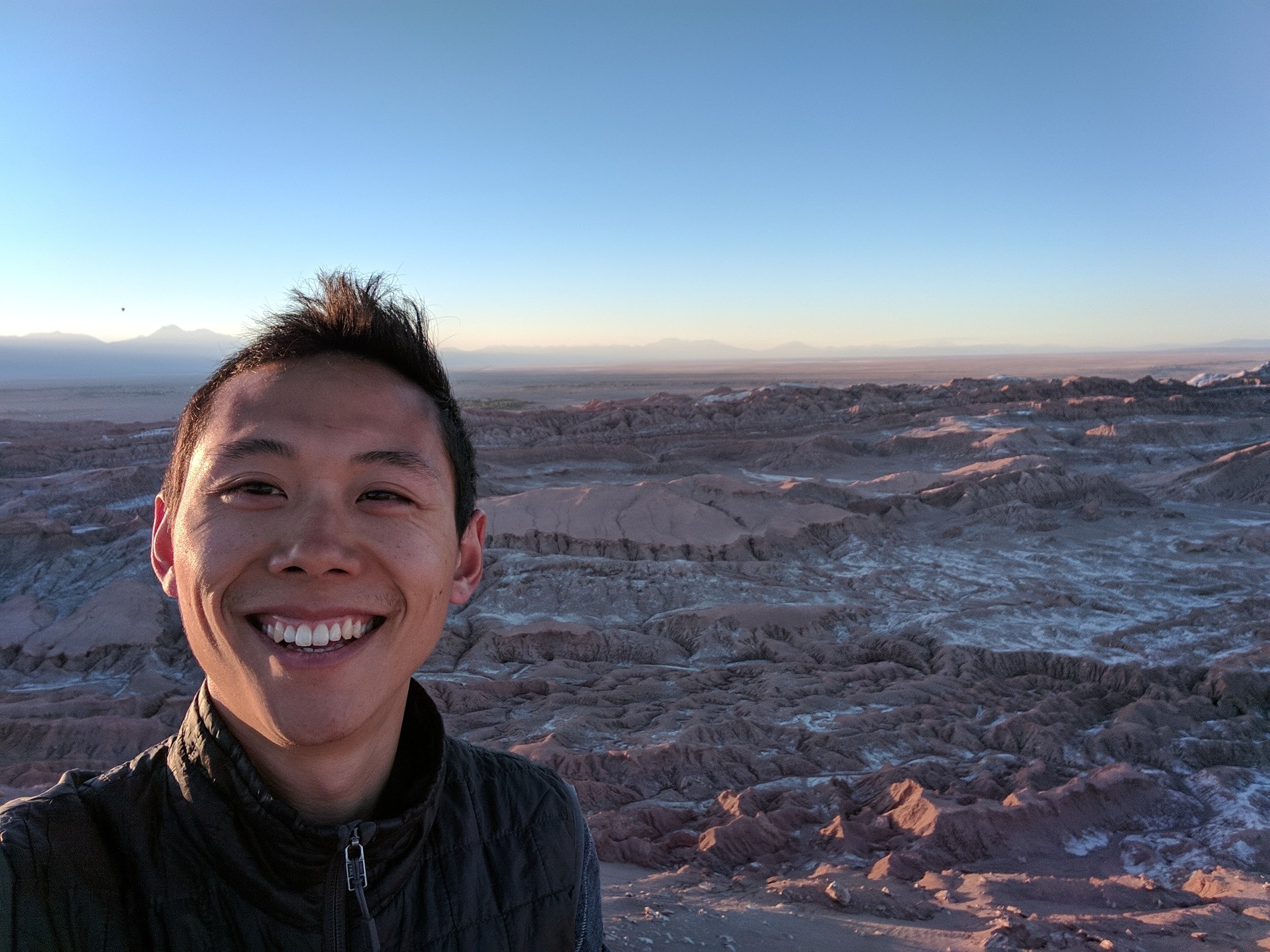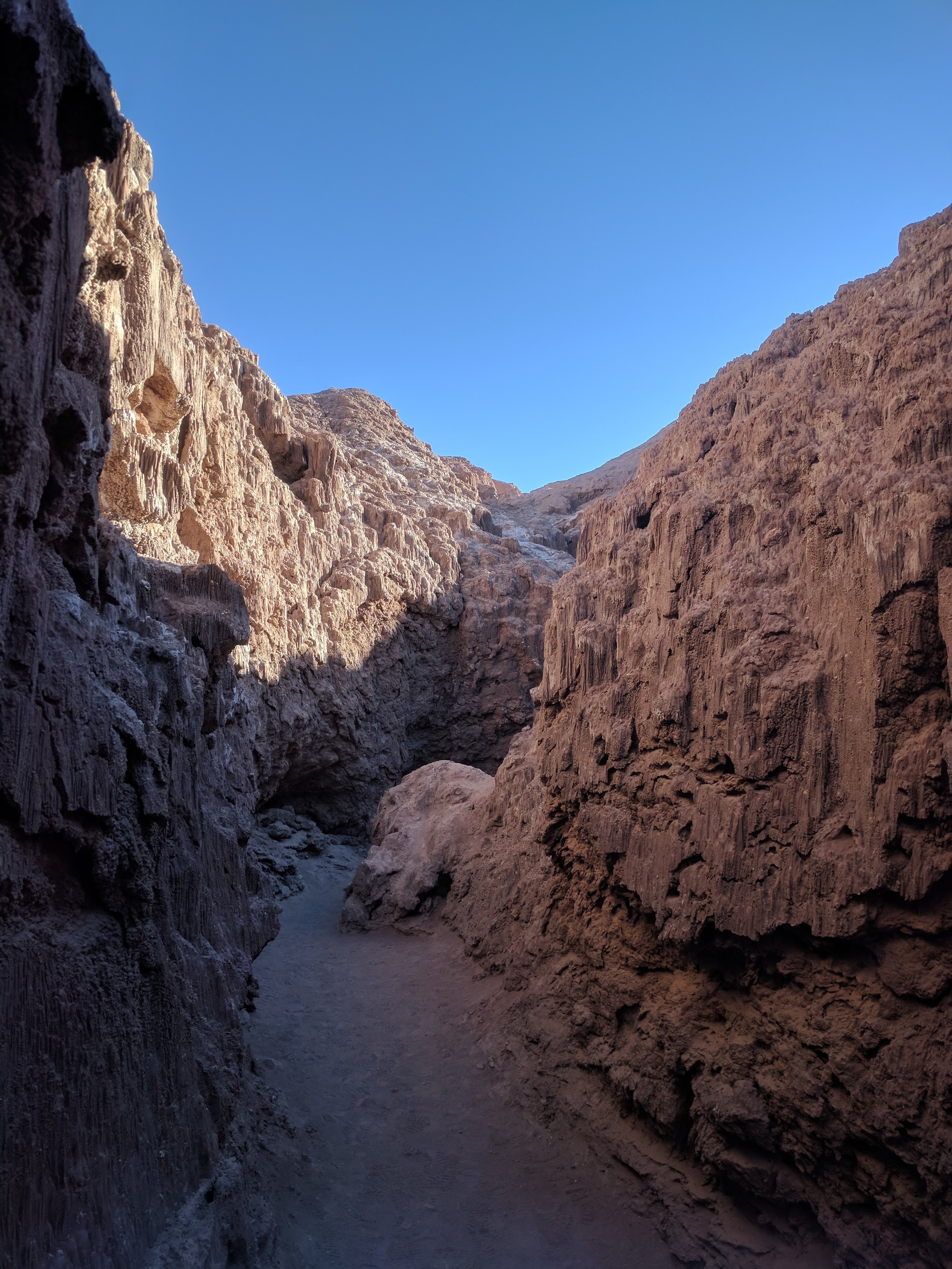Talk about a change in scenery! After two weeks in the Patagonian wilderness, I found myself in the driest non-polar desert in the world, the Atacama Desert in northern Chile.
But I almost didn't make it...
At the Argentinian border, I was informed that I was missing an entry stamp into Argentina from my round-trip ferry to Uruguay. I had noticed the absence of Argentinian immigration officials at the ferry terminal, but didn't think much of it at the time. I later learned that Argentinians and Uruguayans don't need stamps to cross the border, so I assume that someone didn't care to accommodate the 1% of tourists. After forty-five minutes of pleading my case, the border officer finally sent me on my way with an exit stamp, a letter, and a dirty look. I definitely got the short end of the stick. The exit stamp was the wrong day, the letter telling me to pay a fee online was devoid of any instructions, and the fee was $176 despite the website showing $88. Lesson learned- get your stamps! Thankfully, the desert quickly took my mind off the stamp snafu.
The Stars
The Atacama Desert is one of the best places for stargazing due to a unique combination of factors:
2. Altitude- The main town of San Pedro sits at 2.4K meters (7.9K feet) and many of the points of interest are upwards of 4K meters (13K+ feet).
3. Minimal light pollution- People don't flock to one of the least habitable environments in the world.
One of the world's biggest telescopes, the Atacama Large Millimeter Array (ALMA), sits in the middle of this desert:
Credit: ALMA (ESO/NAOJ/NRAO)/L. Calçada (ESO)
When I first saw this picture, I thought, "There's definitely more than one telescope and they look like radio antennas". I was lucky enough to visit the ALMA observatory and get some answers.
Most folks are familiar with optical telescopes, in which you peek through a lens with the naked eye. The telescopes at ALMA, however, are radio telescopes. Why do we need them? First, a brief explanation of the electromagnetic spectrum. Human eyes can see electromagnetic radiation from a very small section in the middle of the spectrum, which we call visible light. On one end of the spectrum are gamma rays with very short wavelengths (i.e. cosmic snipers). At the other end are radio waves, with very long wavelengths.
Credit: http://www.science.uwaterloo.ca/~cchieh/cact/c120/emwave.html
Dust in the universe absorbs most visible light that we would see from just optical telescopes, so as ALMA collects radio waves, other observatories collect infrared, ultraviolet, x-ray, etc. Observing different parts of the spectrum reveals different findings.
Images of the Crab Nebula (Credit: Radio from NRAO)
There are 66 discrete telescopes at ALMA, but they can be picked up and moved based on the observation being conducted. Incoming radio waves bounce off the dish and are directed to the center of the telescopes, which sends the data to a supercomputer. The computer then compiles all the data from the telescopes. So regardless of the actual number of telescopes being used in a given observation, the final output is equivalent to that of one telescope!
As much as ALMA was abstract, standing beneath a clear night sky was visceral. A midnight star tour was my first look at the Southern sky. The Milky Way wasn't visible that night, but we got a lesson in constellations and saw plenty of awe-inspiring space through the powerful optical telescopes. Connecting with the stars is always a humbling experience: my worries seem trivial, possibilities seem endless, and questions become existential.
The Land
My introduction to the effects of altitude was visiting El Tatio, the highest geyser field in the world. Sitting at 4.3k meters above sea level, the high altitude means the water mostly bubbles and oozes out of the geysers. But what the geysers lacked in height, they made up for in number. 8% of the world's geysers are at Tatio, and it was certainly an effort to see them all. I start walking, and after a couple steps, my head is pounding and I'm sucking air. And that's on a flat plain. So naturally, I decided to take a bike ride over 1K meters in elevation gain and 42km in distance on 3 hours of sleep. My destination was the Valley of the Moon, which gets it name from the stone and sand formations resembling the moon that have been carved by wind and water. Shades of red, yellow, brown, and blue emanate from the landscape, covered by a mantle of white salt. It's unlikely I'll ever go to the moon, but I got close.
What I also got was my ass kicked on the bike ride. Literally, my butt was sore. In addition to the constant dull pounding of an altitude headache, lack of sleep, and rolling hills, the rocky road was punishing. But the physical challenge accentuated the mental and emotional experience, which I can only describe as out-of-this-world. I felt an overwhelming peace while riding through the valley. There were no people, no wind, no animals, no water, and not even a cloud in the sky. I stopped and it was dead silent. My mind was blank- I was just soaking in my surroundings.
The thick silence also reminded me of what's hidden in the land. Thousands of political prisoners from the 1973 Chilean military coup were believed to have been brought to Atacama. Planted crosses and flowers dot the road in commemoration, and mothers still roam across the vastness searching for the remains of their missing loved ones buried beneath the scorching earth. Nostalgia for the Light is a documentary well-worth watching. The Atacama Desert is an awe-inspiring blend of sky and earth, with plenty of secrets in any direction you look.
